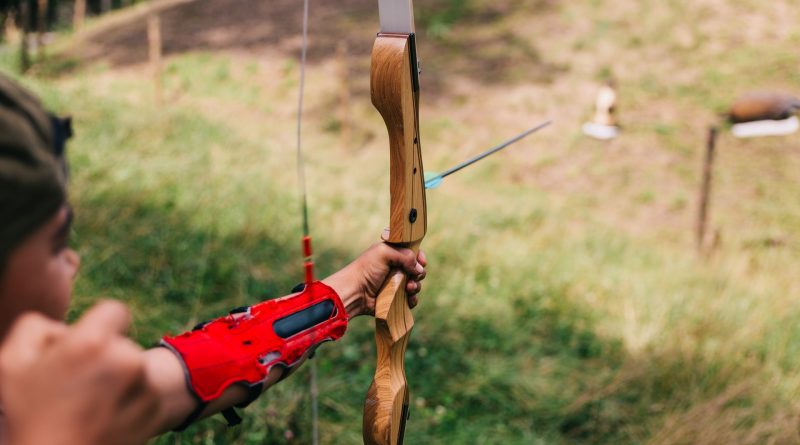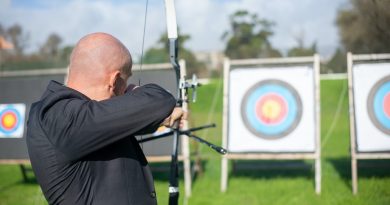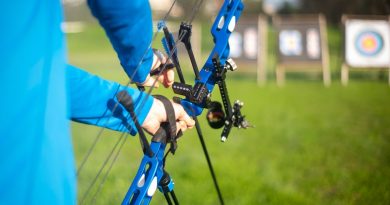Groves Magnum II Recurve Bow
In this era of compound bows, with their ultra-lightweight perforated risers, 80% let off, easily-adjusted cams, and other mechanical features, there are still those who prefer a traditional, recurve bow – a flexible arc of layered materials (wood and fiberglass, usually) with a string attached, without cams, rests, or any of the other fancy flourishes of the modern mechanical bow. Although harder to use, since holding weight is very high (meaning it is necessary to draw and loose the arrow quickly, rather than holding your aim steadily for a longer period of time), recurve bows appeal to some sensibilities more than the industrial-age precision of compound bows.
Although they employ modern materials, and make use of modern mathematical analysis and engineering in their design, recurve bows have a timeless feel that is lacking in the wheel-and-pulley system of the compound bow. Recurve bows can be quite elegant in appearance, and although their performance is below that of their mechanical kindred, they are still very effective and can be used for either target shooting or hunting with a good chance of success.
A good example of a well-made recurve bow is to be found in the Groves Magnum II, a recurve bow made out of a maple core with layers of fiberglass laminated around it, and sold in lengths of 56 inches, 60 inches, or 62 inches. The Magnum II has been engineered to provide very good performance for a recurve bow, and even if it is not quite as fast as the compound models (some of which are over 100 feet per second faster), it is still able to hold its own for speed against most other recurve bows on the market today.
Since it is a recurve and not a compound, the Groves is a large bow, and will require plenty of space to use properly. Standing and kneeling shots are both possible, but you will need to take care not to foul the limbs or string in nearby branches when taking your shot, especially if you are accustomed to the much more compact dimensions of compound bows. The limbs are 1 7/8” wide close to the hand grip – which is itself rather stout, though not uncomfortably so – and are 3/16” thick at the midpoint. The tip of each limb is strengthened with a supplementary layer of fiberglass and wood. There is a 6” sighting slot in the handle section of the bow.
The Magnum II is a two-piece take-down bow, with limbs that can be separated in order to transport or store the weapon in a more manageable form. The joint is very sturdy, however, and there will be no problems with the limbs’ seating when they are connected – the fit is very solid and gives much the same performance as a one-piece bow. A 3/8” bolt does the actual holding together of the two pieces, but there is also a pair of alignment pins to remove any chance of torque between the sections while drawing.
The Groves Magnum II has a 60 pound draw weight and a 30” draw length, but it is the high flexibility of the limbs that gives the bow its high speed. The arrow rests on a ¾” arrow shelf, and the bow is designed to allow you to use an array of different arrow spines without difficulty. This flexibility will be especially appreciated by those who prefer over-spined arrows, since they can be fired without the need to flex.
The speed achieved by the Magnum II is very good for a recurve bow – which, again, is due to the high flexibility of the limbs. The bow can shoot a 300-grain arrow with a speed of 250 feet per second, while it fires a 540-grain arrow at 212 feet per second. This places it among the fastest recurve bows on the market, and, together with its strength and accuracy, make it a good choice for sportsmen of all kinds who want a more traditional form of bow with some skillful modern engineering.




